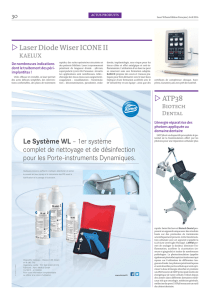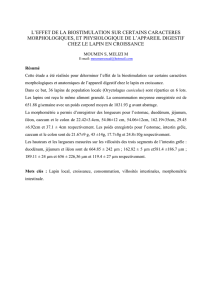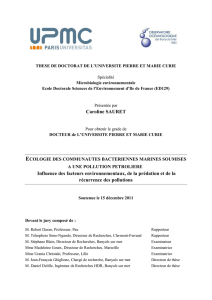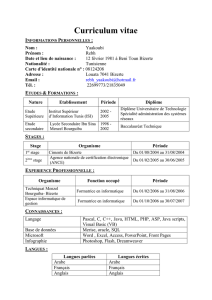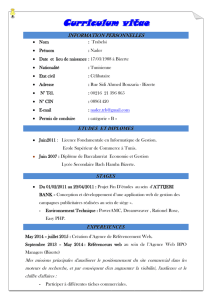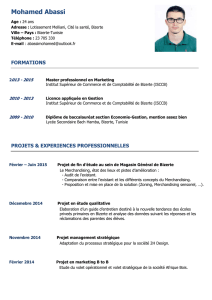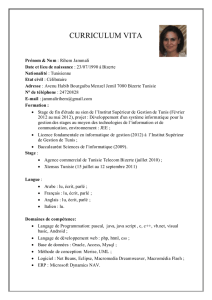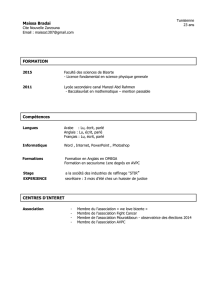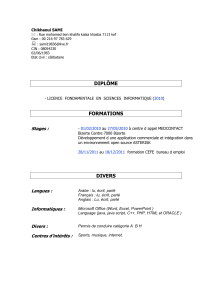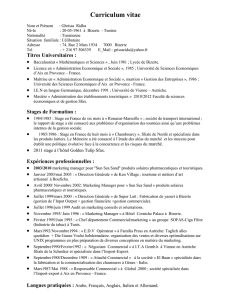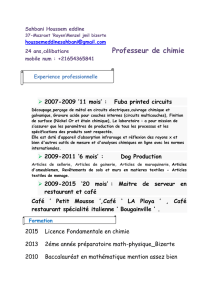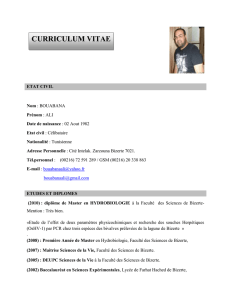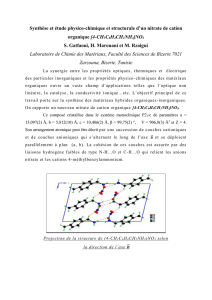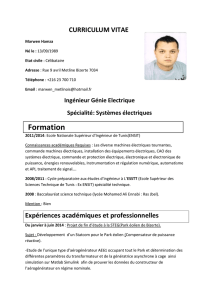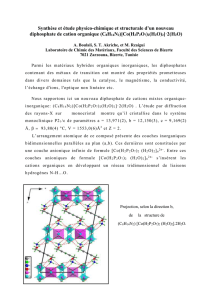131
publicité
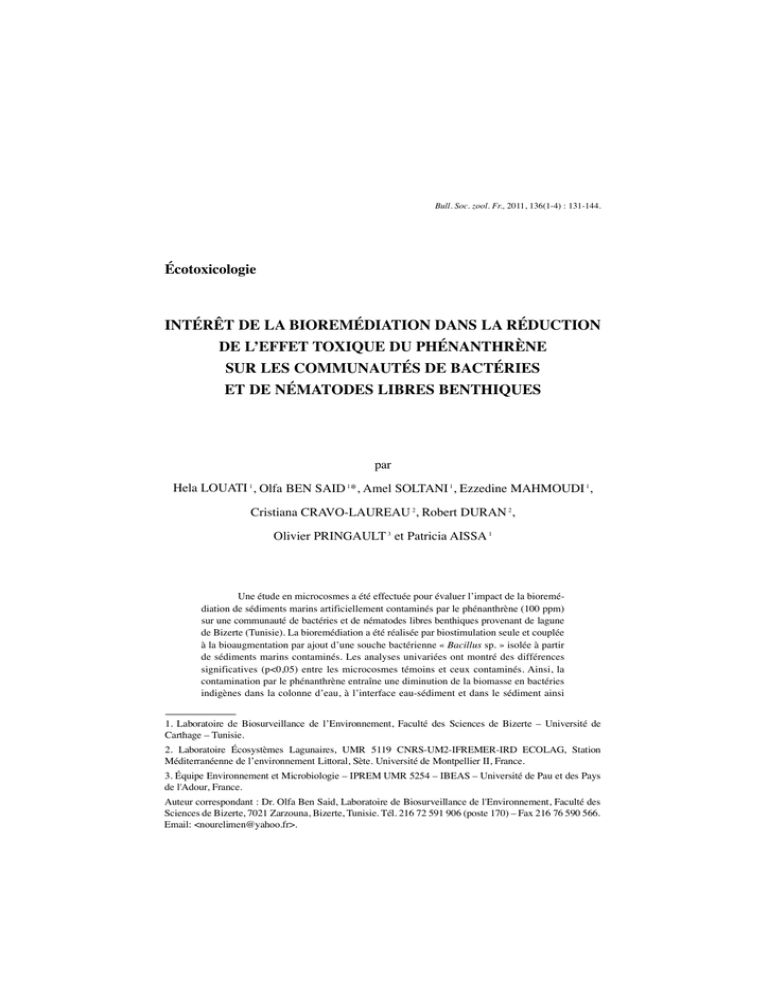
Bull. Soc. zool. Fr., 2011, 136(1-4) : 131-144. Écotoxicologie INTÉRÊT DE LA BIOREMÉDIATION DANS LA RÉDUCTION DE L’EFFET TOXIQUE DU PHÉNANTHRÈNE SUR LES COMMUNAUTÉS DE BACTÉRIES ET DE NÉMATODES LIBRES BENTHIQUES par Hela LOUATI 1, Olfa BEN SAID 1*, Amel SOLTANI 1, Ezzedine MAHMOUDI 1, Cristiana CRAVO-LAUREAU 2, Robert DURAN 2, Olivier PRINGAULT 3 et Patricia AISSA 1 Une étude en microcosmes a été effectuée pour évaluer l’impact de la bioremédiation de sédiments marins artificiellement contaminés par le phénanthrène (100 ppm) sur une communauté de bactéries et de nématodes libres benthiques provenant de lagune de Bizerte (Tunisie). La bioremédiation a été réalisée par biostimulation seule et couplée à la bioaugmentation par ajout d’une souche bactérienne « Bacillus sp. » isolée à partir de sédiments marins contaminés. Les analyses univariées ont montré des différences significatives (p<0,05) entre les microcosmes témoins et ceux contaminés. Ainsi, la contamination par le phénanthrène entraîne une diminution de la biomasse en bactéries indigènes dans la colonne d’eau, à l’interface eau-sédiment et dans le sédiment ainsi 1. Laboratoire de Biosurveillance de l’Environnement, Faculté des Sciences de Bizerte – Université de Carthage – Tunisie. 2. Laboratoire Écosystèmes Lagunaires, UMR 5119 CNRS-UM2-IFREMER-IRD ECOLAG, Station Méditerranéenne de l’environnement Littoral, Sète. Université de Montpellier II, France. 3. Équipe Environnement et Microbiologie – IPREM UMR 5254 – IBEAS – Université de Pau et des Pays de l'Adour, France. Auteur correspondant : Dr. Olfa Ben Said, Laboratoire de Biosurveillance de l'Environnement, Faculté des Sciences de Bizerte, 7021 Zarzouna, Bizerte, Tunisie. Tél. 216 72 591 906 (poste 170) – Fax 216 76 590 566. Email: <[email protected]>. 132 Bulletin de la Société zoologique de France 136 (1-4) qu’une réduction hautement significative (p<0,001) des densités moyennes de nématodes libres marins. Nos résultats ont également montré que la bioremédiation réduit l’effet toxique du phénanthrène sur la microflore et la nématofaune marines. Ainsi, tous les essais de biostimulation, seule ou associée à la bioaugmentation, ont révélé une nette augmentation de la biomasse bactérienne totale et des effectifs moyens des nématodes par rapport aux microcosmes contaminés. Cette augmentation a été plus accentuée au niveau des microcosmes de biostimulation et de combinaison avec ajout d’une composition variée de nutriments. Mots-clefs : phénanthrène, biostimulation, bioaugmentation, bactéries hétérotrophes, nématodes libres, bioindicateurs, microcosmes. Value of bioremediation for reducing the phenanthrene toxic effect on benthic communities of bacteria and free-living nematodes A microcosm experiment was carried out to evaluate the impact of bioremediation of marine sediments artificially contaminated with phenanthrene (100 ppm) on benthic communities of bacteria and free-living nematodes from Bizerte lagoon (Tunisia). Bioremediation schemes tested included biostimulation and a combination of biostimulation and bioaugmentation by inoculating a strain of the bacterium “Bacillus sp.”, isolated from contaminated marine sediments. Univariate analyses showed significant differences (p<0.05) between controls and contaminated microcosms. Thus, phenanthrene caused a decrease in the biomass of indigenous bacteria in the water column, at the interface and in the sediment, and a highly significant reduction (p<0.001) of free-living nematode densities. Our results also show that bioremediation resulted in a reduction of the phenanthrene toxic effect on the marine microflora and nematofauna. All tests of biostimulation and biostimulation-bioaugmentation combination showed a net increase in the total bacterial biomass and densities of nematodes compared to contaminated microcosms. This increase was more pronounced in microcosms of biostimulation and biostimulationbioaugmentation combination with the addition of different nutrients. Key-words: phenanthrene, biostimulation, bioaugmentation, heterotrophic bacteria, free-living nematodes, bio-indicators, microcosms.
